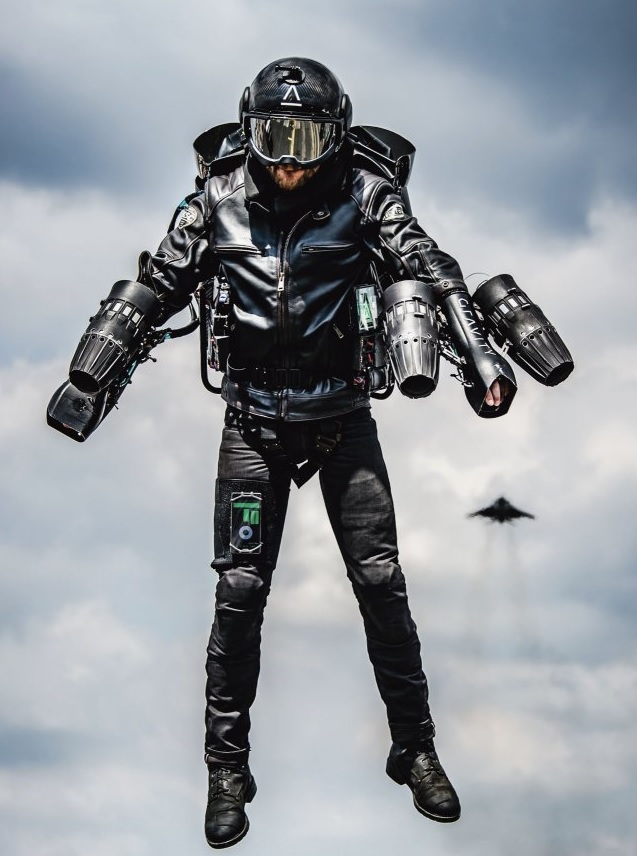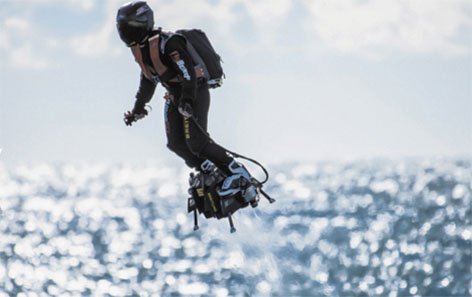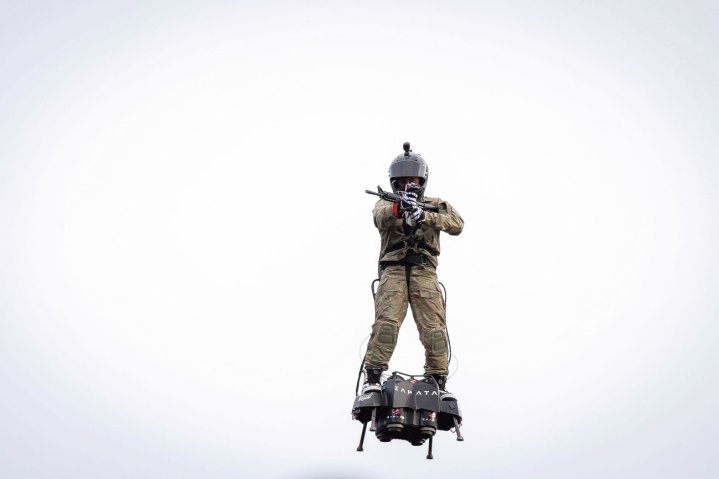Wearable flight systems are apparently progressing and Special Operation Forces (SOF) may “soon” be equipped with such platforms, according to a report by Jane’s.
Reportedly, USSOCOM and French COS, both SOF components are considering jetpack technology.
“JetPack Aviation’s JB11 JetPack is being developed under a Co-operative Research and Development Agreement (CRADA) signed in 2016 with US Special Operations Command’s (USSOCOM’s) Naval Special Warfare Command (NSWC).”
While French DGA is studying Zapata’s Flyboard Air technology as a concept but is not yet considering such systems for operational use.
According to JetPack Aviation’s chief executive officer, David Mayman, the technology is being designed in collaboration with NSWC’s Development Group (DEVGRU).
Jane’s cited Mayman who said that he could not provide any significant details in connection to the concepts of operation (CONOPS) or tactics, techniques, and procedures (TTPS) associated with this emerging technology but said “recent development has been related to the needs” of DEVGRU, the official name of a US Navy SEAL unit.
“By achieving the challenging goals under this agreement, we’ve proven that a small, powerful turbine-powered vehicle can efficiently, dependably, and safely meet rigorous operational demands of our nation’s most elite SOF [Special Operations Force] and industry partners,” JetPack Aviation said in a statement.
According to Mayman, training of US Navy Seals to operate the JB11 in tethered and free-flight modes was also included.
Jane’s reported that “the JB11, currently at Technology Readiness Level 7, comprises a six-engine solution. The turbine-powered, vertical take-off and landing (VTOL) system relies on kerosene or diesel fuel, although a hydrogen-powered variant is also being considered for future development. Thrust is managed autonomously by a central processing unit.”
The system was designed with ‘rapid mount/dismount’ in mind and features an integrated parachute for emergencies.
The design parameters are also aimed at allowing the pilot to carry the jetpack unaided, and it will have a maximum endurance flight time of 15 minutes, and a maximum speed of 193 km/h, and a maximum range of 15 miles. While pilots must weigh less than 230 lb.
“We’ll be releasing a new vehicle, with substantially more potential use cases. It is something that is creating quite a lot of interest from each arm of the US Department of Defense,” Mayman said.
Separately, Gravity Industries is developing its Jet Suit that utilizes 5 gas turbine engines capable of generating 1,050bhp and 144 kg of thrust to enable vertical lift and human propulsion. Directional flight control is achieved by vectoring the arm engine thrust. Options for propulsion include diesel, kerosene, or jet fuel.
The first flight was performed in 2017, the Jet Suit has a maximum payload capacity of 85 kg, providing the pilot with a maximum speed of 50 miles per hour and a flight duration of up to 4 minutes, depending on conditions. The suit can also operate at altitudes up to 12,000 feet above ground level.
Founder of Gravity Industries and its chief tester Richard Browning told Jane’s that Jet Suit was shown to the UK Department of Defense, the US SEAL special forces and representatives of maritime special forces from an unnamed country in Southeast Asia.
Browning said that CONOPS and TTP are still being studied, and that possible uses for Jet Suit include moving individual fighters and small groups over “short distances in most weather conditions.”
On the French Side, on November 24th, 2018, the French Special Operations Command (COS) conducted an assessment of the Zapata Flyboard Aircraft technology as part of the Defense Innovations Forum in Paris in France.
According to the representative of the French Armed Forces, the demonstration was observed by the Minister of the Armed Forces Florence Parley, who suggested that the technology could be useful for COS units. In the course of the demonstration, the Flyboard Air carried one fighter with a carbine, who provided observation of the River Seine, while the marines landed from motorboats on the quay, demonstrating the release of prisoners.
According to the Zapata documentation, the pilot stands in flight on the Flyboard Air platform, which has six small turbojet engines. Flyboard Air has a top speed of 93 miles per hour; maximum working height of 5,000 feet above sea level; and a maximum flight duration of 10 minutes. The platform itself weighs a total of 25.1 kg, with a carrying capacity for transporting another 102 kg.
There were earlier reports of Zapata EZ-Fly jetpack technology from September 2018.
The project in which the EZ-Fly was tested was formally known as the Individual Aerial Mobility System (IAMS), began on August 22nd, 2018 and ran through October 24th.
“SOFWERX, along with Z-Air, developed and tested a training protocol to determine its efficacy for SOF operators, and to determine how quickly they could be trained to pilot the EZ-Fly,” the Florida-headquartered tech incubator said in an official fact sheet. “The trainees performed advanced skills assessments and were able to successfully pilot the EZ-Fly through a slalom course with three weeks of total training.”








